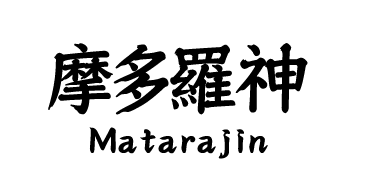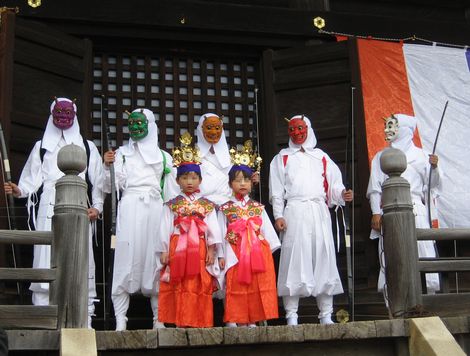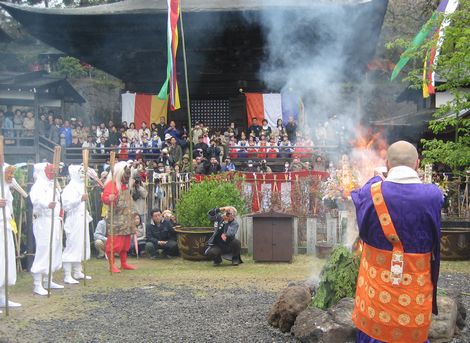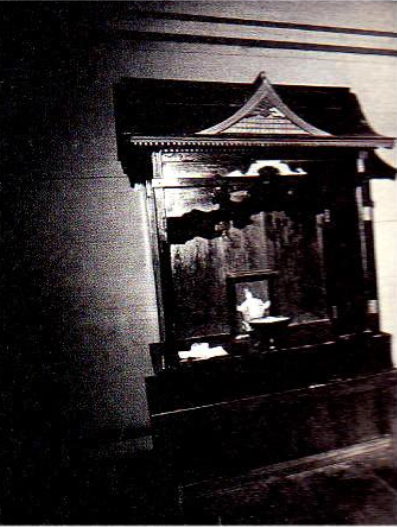 |
Historically, Matarajin-sama was always enshrined as a hidden protective power behind buddha statues. His image would seldom see the light of day after being enshrined due to the potency of the power of his presence. Taizan Fukun, an incarnation of him, was also one of the most important deities in Omnyoudou. Invoking his image through a ritual was said to be able to save people from the brink of death or even lenghten lifespans. |
We have little evidence of home worship, but what little we do have are photos owned by the Arakawa Metropolitan University Campus' Library (seen above), which depict a 19cm tall figurine of Matarajin-sama in front of an altar which is closed, save for a bowl for offerings.
Since he's a Buddhist deity, Buddhist home worship could be used as a basis for him, perhaps while adapting the ways of temple worship.

Held on the first Sunday of April at the Amabikisan Rakuhouji Temple, the Matarakishin festival is one of Japan's great oni festivals. It commemorates the time the temple burned down during a civil war in 1471 but was rebuilt by a kishin lord riding a white horse commanding an army of oni.
This kishin lord was said to be Matarajin-sama, or Matarakishin, as he's known locally.
The ritual involves several people dressed as oni, as well as two attendant children burning a ritual fire (known as goma fire).

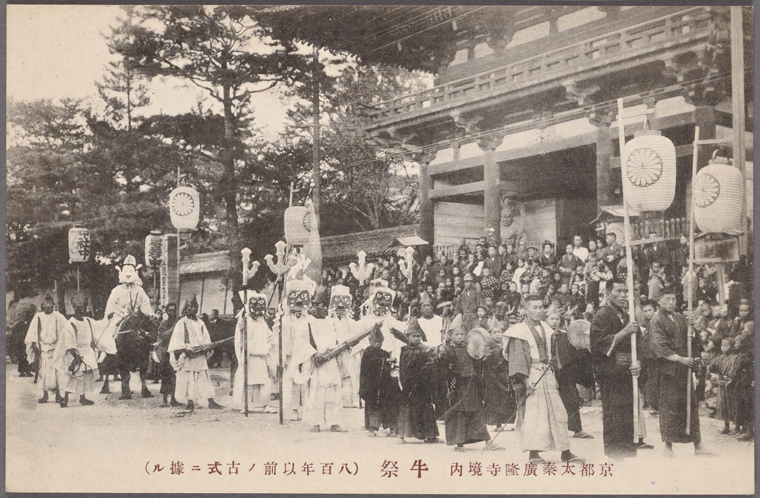
Ushi-Matsuri sometime in the first half of the 20th century

Although Matarajin is not a name often heard within religious circles these days, that doesn't mean he was left without worshippers, most likely in no small thanks to the video game series Touhou Project. I am of course one of these people, and indeed my first point of connection with this kamisama was through Touhou 16 - Hidden Star of Four Seasons, which stars (pun intended) a character based on him.
Outside of that, the Mootsuu-ji annually holds a Matarajin-festival every January, where omamori are also handed out. Ofuda for him are also available in the Rinnou-ji Temple.
There are also a couple of places he's enshrined in, such as the Senryuji Temple, from which he was actually relocated as of writing this paragraph, more info here.
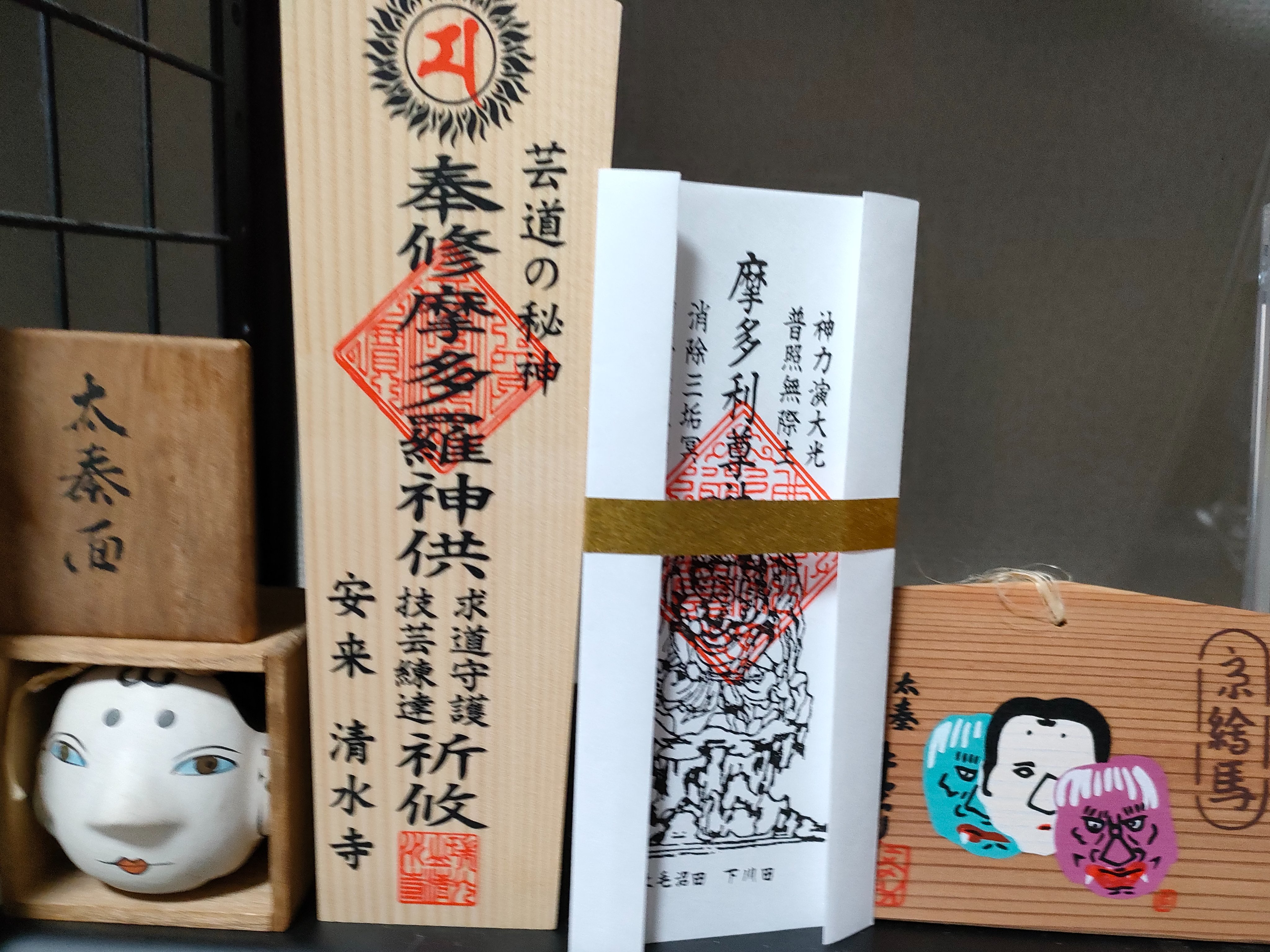 |
 |
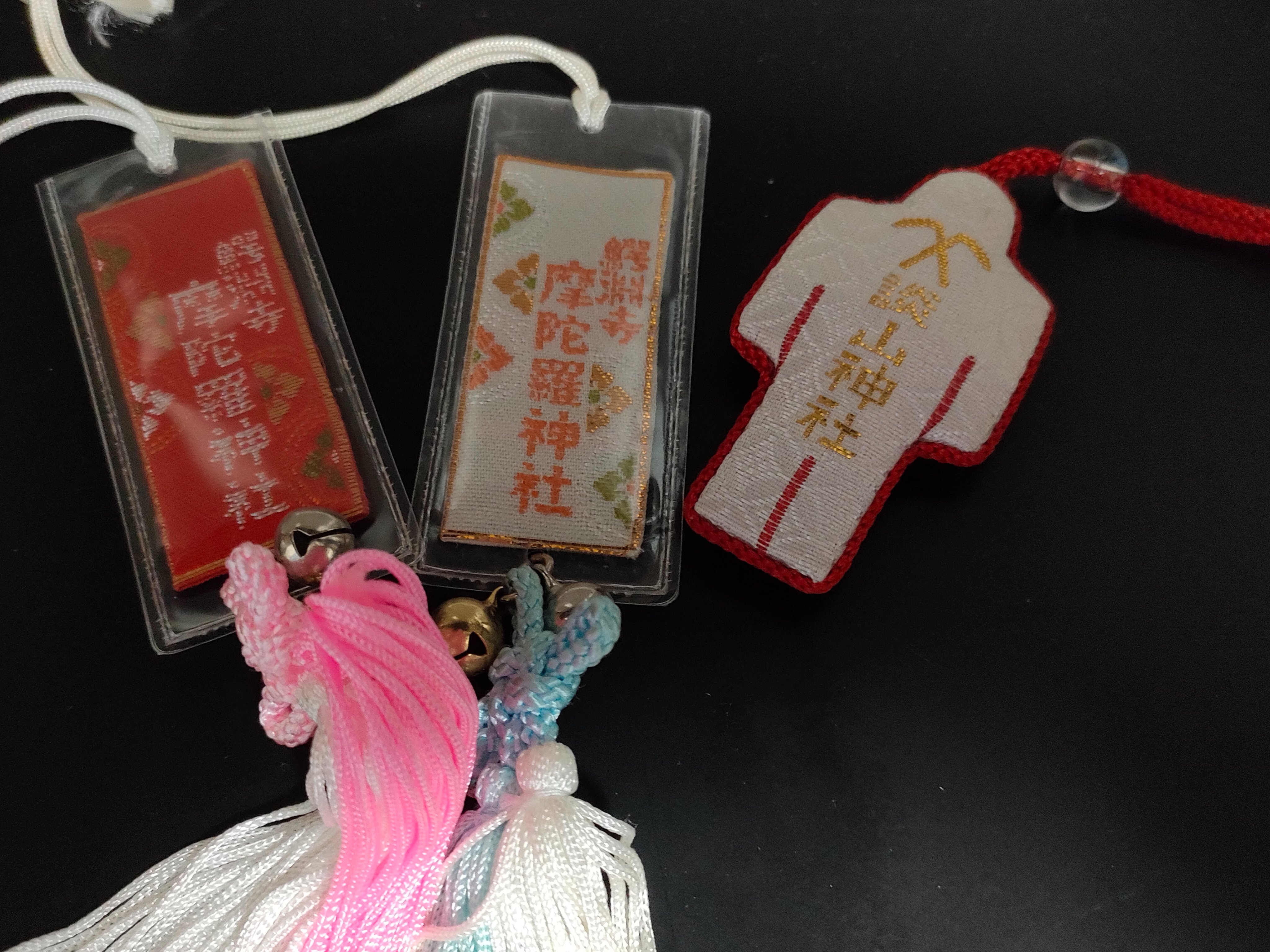 |
A Matarajin-enthusiast's collection of Matarajin ofuda, ema, goshiun, amulets and a clay bell commemorative of Ushi-Matsuri.

 Worship
Worship  My connection to him
My connection to him  Depictions
Depictions 